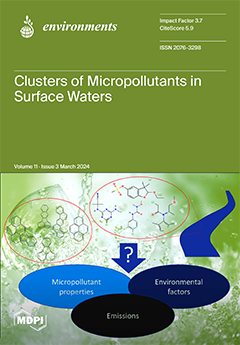Coastal marine areas are threatened by different forms of pollution, among which potentially toxic elements (PTEs) represent a primary hazard. In this study, 16 Mediterranean macroalgae colonizing the upper eulittoral and infralittoral zones were studied for their PTE accumulation capabilities in order to identify possible biomonitors that could replace the use of
Posidonia oceanica, a protected species. To achieve this objective, macronutrients (Ca, K, Mg, P, S), micronutrients (Cr, Cu, Fe, Mn, Na, Ni, Si, V, Zn) and non-essential elements (Cd, Pb) were analyzed in the thalli of different algal species, the leaves of
P. oceanica and in sediments collected from six sampling sites along the Cilento coast (Campania, Italy), all characterized by different anthropogenic pressures. For sediments, a sequential extraction of PTEs to evaluate their bioavailability profile was also carried out together with the analysis of mineralogical composition, particle size distribution, pH and organic matter content. Macrophytes, belonging to different divisions (six Rhodophyta, four Chlorophyta, six Heterokontophyta, one Embryophyta), are characterized by different PTE concentrations, with a few ones being characterized by an even accumulation response toward the different PTEs. One of these, the brown alga
Dictyota spiralis, is able to accumulate PTEs in concentrations similar to
P. oceanica and provides more accurate concentration gradients, highlighting clear pollution scenarios that were overlooked using
P. oceanica only. Therefore,
D. spiralis is a useful PTE biomonitor of coastal marine ecosystems and a suitable replacement for
P. oceanica, also featuring the possibility of being employed in active biomonitoring applications.
Full article





